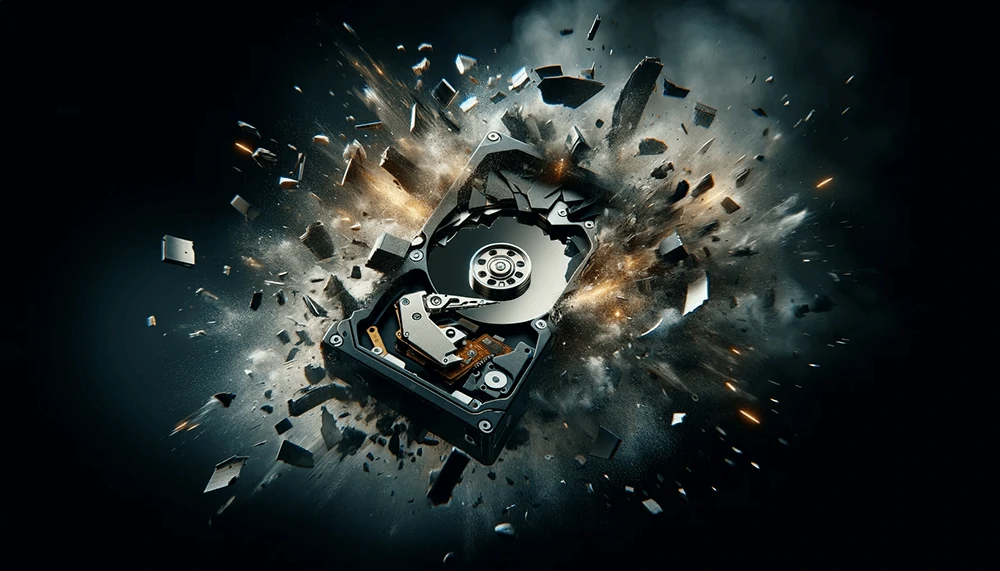Methods of Data Destruction
Ensuring Digital Security: An Overview of Data Destruction Methods
Whether personal data, corporate intellectual properties, or regulated information, the way we dispose of them has a loud impact. Effective data destruction failures will, therefore, result in financial losses, reputation damages and legal consequences against the organization that result from unauthorized access and misuse of data.

In addition, a broad range of industries typically find it mandatory to meet such regulatory specifications as how and when data are destroyed to maintain compliance with world-class standards such as GDPR, HIPAA or the Sarbanes-Oxley Act.
Other articles: How do you dispose of data under GDPR?
Based on these challenges a number of varieties of data destruction methodologies are developed according to the kind of data, media, and security levels. These methods protect not only the privacy but also help organizations manage their electronic waste in an environmentally responsible manner.
When deciding on the best approach to secure sensitive information, it's important to consider the various types of data destruction available, each with its own advantages and limitations.
What are the methods of data destruction?
In this follow-up, we will come to know about some methods of data destruction, then we can learn what consequences it will be for us if these methods are not adopted!
Understanding the intricacies of different methods of destruction allows organizations to make informed decisions that align with their security policies.
1. Physical Destruction
Physical destruction ensures that the data is unrecoverable 100%. Also, it changes the storage media physically in such a way as to make the data irrecoverable for further use.
◾ Shredding: This is to destroy electronic media. It cuts through them into small fragments.This is suitable for organizations that handle a large volume of data and need to destroy it efficiently.
◾ Crushing: This refers to applying mechanical pressure through either a punch or press, changing the shape of the equipment and obliterating its internal elements and the possibility of drive work.
◾ Incineration: High-temperature burning completely consumes the media, although it requires specialized facilities to manage the process safely and environmentally responsibly.
Why is physical destruction deemed to be a fail-safe method for data destruction?
Physical destruction is essential since all data storage devices are thoroughly smashed, and thus, chances of data recovery are reduced to zero. The method is conclusive in such a way that either the media is broken down physically into bits or burnt down to ashes, making the means to reconstruct or retrieve data far-fetched.
If physical destruction is not done precisely, some parts of the storage device will still remain viable enough so as to be recoverable.
See also: data destruction process
2. Degaussing
The process involves the use of a high-power magnet, which interferes with the magnetic field of storage media to effectively erase the data. The degaussing technique works well with both magnetic tapes and hard disk drives but renders the media useless after use. Always ensure the degausser is powerful enough for the media type being used. This is as older or weaker degaussers might not ensure a complete elimination of data from the media if the storage device is newer.
See also: What is a certificate of data destruction?
Why is degaussing considered an important way of protecting data for certain types of storage?
Degaussing is the act of scrambling magnetic fields present in magnetic media, including hard drives and tapes. When done to its maximum limit, the scrambling of the fields makes data unreadable and therefore irrecoverable. This is very important to an entity that may require rapid and effective erasing of large magnitudes of magnetic storage. If degaussing has been done incompletely or improperly, then the recovery of the data is probable. Consequences include data leakage, personal and corporate security violation, and non-compliance with data protection regulations.
3. Overwrite
Overwriting is a process in which the new data are written onto the old data, usually more than once, to prevent recovery of the old data. This should facilitate the reuse of storage media and be friendlier to the environment than physical destruction.
◾ Software Tools: There are quite a number of software tools that adhere to a standard set, as dictated by the Department of Defense (DoD) or the National Institute of Standards and Technology (NIST), on purging data.
Why is overwriting a preferred method for organizations intending to reuse their storage devices?
Overwriting is the process of replacing old data with new, usually random data many times, making the recovery of original data almost impossible. This makes reusing the storage device possible, therefore reducing electronic waste from such devices and availing an economical solution for organizations.

4. Cryptographic Wiping
Cryptographic wiping is the method of encrypting data and destroying the keys used in the encryption. This could be very effective if data is required to be destroyed on an immediate and regular basis in an environment like cloud storage.The advantage is mainly that, by doing so, the data would become irretrievable without necessarily destroying the storage medium, leaving the device still usable.
What makes cryptographic wiping an efficient method for data destruction in modern IT environments?
Cryptographic wiping ensures that the data is secure. It is easy for the encryption key to be destroyed, whereby the data becomes accessible, bringing data destruction without the necessity of physical damage to the storage media. This would be perfect for instances such as cloud computing, where data may be required to be securely wiped without affecting its physical infrastructure.
If the encryption keys are not securely managed or destroyed, then the encrypted data will remain exposed for recovery. Mishandling the exposure of keys undermines the very purpose of encryption and leads to potential data breaches and failure of compliance.
5. Chemical Destruction
This is a less common approach to the destruction of data. Chemically, the acids and bases have been used to damage the storage media physically. It must be handled with extreme care due to the hazardous nature of the chemicals involved. The environmental and health risks linked to chemical destruction are so large that one needs to be professionally very strictly controlled.
Other articles: Data Deletion vs. Data Destruction
Why do we say that chemical destruction is a specialized data destruction method?
Chemical destruction is an operation involving destructive items, such as the use of corrosive substances to commit physical harm to storage media beyond recovery. It is conducted when there is no other valid option or when additional depth of damage to the information is needed. In this way, this technique would guarantee complete corrosion of the physical parts of the storage media, thus preventing any kind of data retrieval. Improper handling of the chemicals in the course of the process will warrant serious health and environmental risks. In addition, unmonitored process parts of the media may survive the destruction, risking unauthorized data recovery. All such give rise to special handling and disposal, furthering additional compliance and safety requirements.
Choosing the Right Method of Data Destruction for Your Needs
Selecting the appropriate data destruction method is crucial to balancing security, cost-efficiency, and environmental responsibility. While shredding and degaussing are ideal for highly sensitive data, software-based overwriting offers a cost-effective solution for less critical information. Organizations should assess their specific needs, compliance requirements, and sustainability goals when choosing a destruction method. Rapid Solutions helps businesses navigate these options, ensuring tailored solutions that align with both security and environmental best practices.
Conclusion
The choice of data destruction methods will depend on the sensitivity of the information and other considerations. the sensitivity of information, environmental considerations, or reusability of the media used in storing the data. Against this background, understanding the strengths and limitations of each method will enable organizations to operationalize data protection strategies that are effective within the context of security needs and regulatory obligations.




